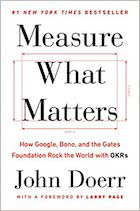| The Bill Gates Bestseller | |

|
How to Avoid a Climate Disaster |
In most languages there is an operator named the "ternary" operator that lets you write concise if/then statements. This makes for less verbose, which is generally a good thing. Perl also has a ternary operator, and I'll demonstrate it here.
General syntax of the ternary operator
The general syntax for Perl's ternary operator looks like this:
test-expression ? if-true-expression : if-false-expression
Let's take a look at a brief example to demonstrate this.
A brief example
Here's a brief example that demonstrates the Perl ternary operator. As you might guess, the first set of print statements will print true, and the second set prints false.
$TRUE = 1; $FALSE = 0; print "This should print 'true': "; $TRUE ? print "true\n" : print "false\n"; print "This should print 'false': "; $FALSE ? print "true\n" : print "false\n";
(I use $TRUE and $FALSE variables because I think they're easier to remember than 1 and 0, especially if you're new to Perl.)
A more complex example
Here's a slightly more complicated example to demonstrate the use of a comparison/equality operator in the "test expression" portion of the ternary operator:
# set the speed $speed = 90; # somewhere later in the program ... $speed > 55 ? print "I can't drive 55!\n" : print "I'm a careful driver\n";
As you might guess, this segment of code will print:
I can't drive 55!
(Which summarizes my driving habits.)
The ternary operator is cool -- I hope you like it!
| Learn the secrets of Google’s success | |

|
Measure What Matters |



